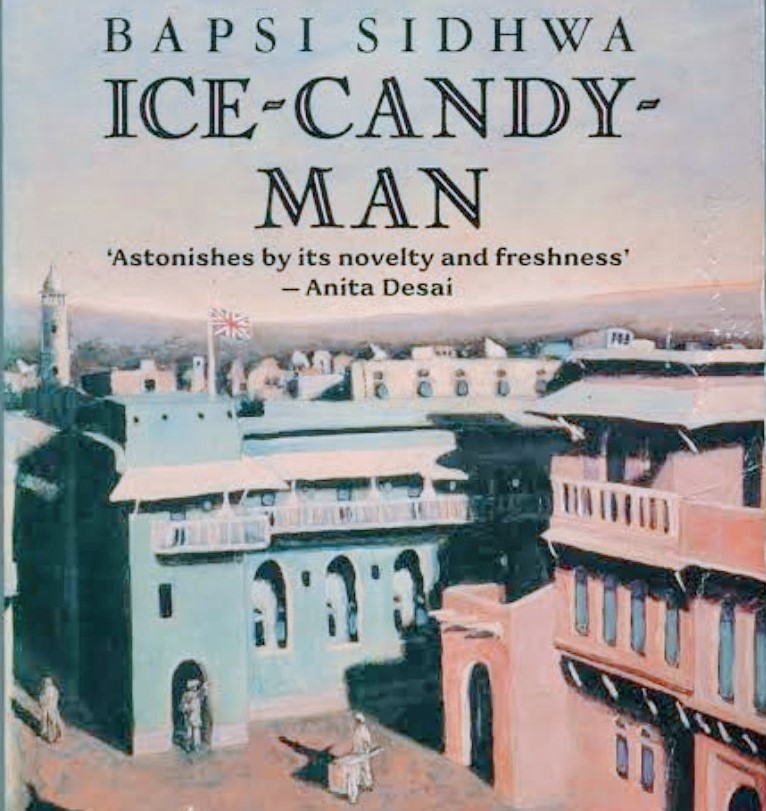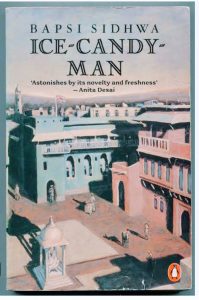
Bapsi has authored many novels, including ‘The Crow Eaters’, ‘An American Brat’, and ‘Cracking India, published in USA as ‘Ice Candy Man’, which is her most famous work.
Reviewed by Shoukat Lohar
Bapsi Sidhwa is a Pakistani novelist and essayist who was born to Parsi parents Peshotan and Tehmina Bhandara on August 11, 1938, in Karachi, Sindh during British rule.
She was educated at the Sir JJ School of Art in Mumbai. She had married to a man of her community at the age of 19 and spent five years in Mumbai. Later, after divorce she married to other person of her community and in 1963, moved to Lahore, Punjab province of Pakistan, with her husband, where she began to write novels. She is now settled in USA.
She has authored many novels, including “The Crow Eaters,” “An American Brat,” and “Cracking India” (published in the United States as ‘Ice Candy Man’), which is her most famous work.
 ‘Ice-Candy Man’, originally published in 1988, is a novel set in the context of the partition of India in 1947 and the Hindu-Muslim riots that followed. It is narrated by a young girl named Lenny Sethi, who is Parsi, and is loosely based on Sidhwa’s own experiences.
‘Ice-Candy Man’, originally published in 1988, is a novel set in the context of the partition of India in 1947 and the Hindu-Muslim riots that followed. It is narrated by a young girl named Lenny Sethi, who is Parsi, and is loosely based on Sidhwa’s own experiences.
The novel focuses on the experiences of people who were caught up in the violence and the emotional trauma that accompanied the partition.
The novel’s central character is a young Muslim man named Ayah, who Lenny calls “the ice-candy man” because he sells ice candy on pushcart. Ayah is in love with a Hindu woman named Shanta, who is engaged to another man.
The story revolves around Ayah’s efforts to win Shanta’s love and the consequences of the sectarian violence that erupts in Lahore.
The novel’s other characters include Lenny’s nanny, Shanta’s fiancé, and a group of prostitutes who live near Lenny’s house.
These characters are all affected by the violence, and the novel explores their experiences and how they cope with the trauma.
Here is an excerpt from the novel:
“Can you hear the riots?” Ayah whispered, pressing my ear to his chest. I could hear his heart beating. It was strong and steady.
I imagined it was the only stable thing in the world at that moment. Everything else was in chaos.
I heard the sound of distant screams, the crash of breaking glass.
Ayah’s fingers dug into my arm. “They’re coming,” he said. “The Hindus are coming to kill us.”
One of the novel’s main themes is the sense of loss that accompanies the partition.
The characters lose their homes, their families, and their sense of identity. They are forced to leave behind their past and try to start anew in a different country.
“The streets were deserted. Even the dogs had fled. The only sound was the cawing of crows and the distant sound of gunfire.”
The novel also explores the themes of love, religion, and identity.
“Ice-Candy Man” has received both critical acclaim and criticism. Some critics have praised its vivid portrayal of the violence and the emotional impact it had on people’s lives.
Others have criticized its use of stereotypes and its portrayal of women as victims. Despite the criticism, the novel is regarded as an important work of literature that sheds light on an important period in South Asian history.
In conclusion, “Ice-Candy Man” is a powerful novel that explores the impact of the partition of India on the lives of ordinary people.
 Bapsi Sidhwa’s vivid portrayal of the violence and the emotional trauma it caused makes the novel a must-read for anyone interested in South Asian history and literature. However, the novel is not without its flaws and has been the subject of criticism.
Bapsi Sidhwa’s vivid portrayal of the violence and the emotional trauma it caused makes the novel a must-read for anyone interested in South Asian history and literature. However, the novel is not without its flaws and has been the subject of criticism.
Nevertheless, it remains an important work of literature that continues to resonate with readers around the world.
Here are a few selected excerpts from “Ice-Candy Man”
“In a riot, like in a game of cards, the winner takes all. The loser loses everything. He is stripped of his identity and made into a thing of contempt.”
“As the sun set, the sky turned the color of blood. The air was thick with the smell of smoke and burning flesh. I felt as if I were living in a nightmare.”
“I could hear the sound of distant screams, the crash of breaking glass. Ayah’s fingers dug into my arm. ‘They’re coming,’ he said. ‘The Hindus are coming to kill us.'”
“The streets were deserted. Even the dogs had fled. The only sound was the cawing of crows and the distant sound of gunfire.”
“I felt as if my life had been ripped apart, like a piece of cloth torn in two. I was Parsi, but I was also Indian. Now I was neither.”
These excerpts give a sense of the novel’s vivid and intense portrayal of the violence and chaos of the partition of India, as well as its impact on ordinary people’s lives.
_____________________
 Shoukat Lohar is Assistant professor in English at Mehran University of Engineering and Technology Jamshoro. He can be reached at Shoukat.ali@faculty.muet.edu.pk
Shoukat Lohar is Assistant professor in English at Mehran University of Engineering and Technology Jamshoro. He can be reached at Shoukat.ali@faculty.muet.edu.pk